Mysore/Mysuru: A wildlife Biologist and Ecologist from Kodagu is in the team that brought eight Cheetahs (Acinonyx jubatus) from Namibia to Madhya Pradesh’s Kuno National Park which were released by Prime Minister Narendra Modi on Sept. 17.
C.M. Bipin of Kodagu is in the core management team of Dr. Yadvendradev Vikramsinh Jhala, Lead Scientist for Project Cheetah and Dean of Wildlife Institute of India.
Bipin conducted extensive fieldwork and ground study before the extinct felines were reintroduced in India. Project Cheetah is the world’s first inter-continental large wild carnivore translocation project.
C.M. Bipin has been working on Project Cheetah since 2011 as a Project Associate at the Wildlife Institute of India, Dehradun, autonomous wildlife research and natural resource service institution under the Ministry of Environment Forest and Climate Change (MoEF&CC), Government of India. Bipin’s name figures prominently among the survey team for the project.
Hailing from Kanoor village near Ponnampet in South Kodagu, Chottekmada Bipin is an Industrial Engineering Management graduate who pursued his passion for wildlife and nature. He finished his schooling at St. Anne’s School, Virajpet and college at Sathya Sai Loka Seva Trust, Alike. His parents Monnappa and Tara Monnappa, retired teachers, are settled in Kanoor.
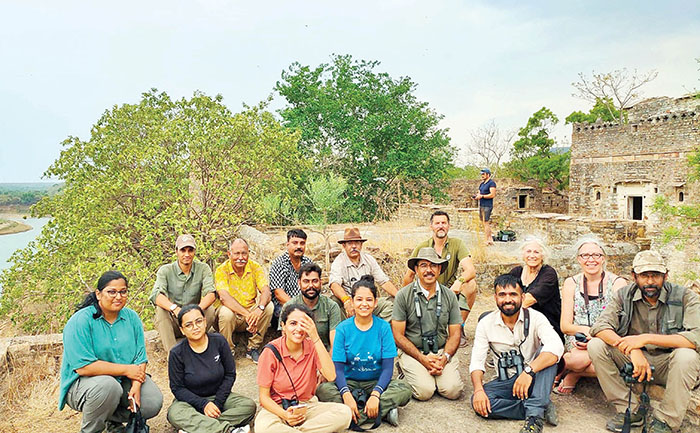
Engineer to Ecologist
Speaking to Star of Mysore from the Kuno National Park where he is monitoring the Cheetahs, Bipin said that though he worked for an electronics company in Bengaluru soon after his engineering at the RV College, nature and wildlife was his passion.
“I was feeling suffocated, so I left and joined a conservation and ecology team at the Centre for Wildlife Studies, Bangalore, in 2004 working on monitoring tigers and prey populations in Karnataka. During this period, I felt the need of educating, better-equipping and training myself in wildlife science and nature conservation and I completed my M.Sc. in Wildlife Biology,” he said.
Bipin later joined National Centre for Biological Sciences in Bengaluru in 2008 for his Master’s and subsequently joined the Wildlife Institute of India, Dehradun in 2011 and has been involved in Project Cheetah.
“As part of the project, the landscape of five States — Rajasthan, Gujarat, Chhattisgarh, Uttar Pradesh and Madhya Pradesh — were studied. 10 places were identified as suitable for Cheetah reintroduction and among them, five were shortlisted with the Kuno National Park in Madhya Pradesh, Shahgarh landscape and Mukundara Hills Tiger Reserve in Rajasthan and Nauradehi Wildlife Sanctuary in Madhya Pradesh being identified as priority ones,” Bipin revealed.
Court case
When the project work was on, in May 2012, the Supreme Court stalled the plan to reintroduce Cheetahs into Kuno sanctuary fearing they may come into conflict with a project to reintroduce lions into the same sanctuary.
But in 2020, the SC lifted its stay, clearing the project after an affidavit filed by the National Tiger Conservation Authority (NTCA) to take the plunge — under the guidance from an expert committee headed by Dr. M.K. Ranjitsinh, the architect of Wildlife Protection Act — and go ahead with plans to bring the African cat to India.
“During the period of stay, I started work on the population recovery and habitat improvement of the critically endangered Great Indian Bustard, the grassland and open forests habitat of which the Cheetahs roamed in our country once and I re-joined the Cheetah Project after the Court clearance,” he said.
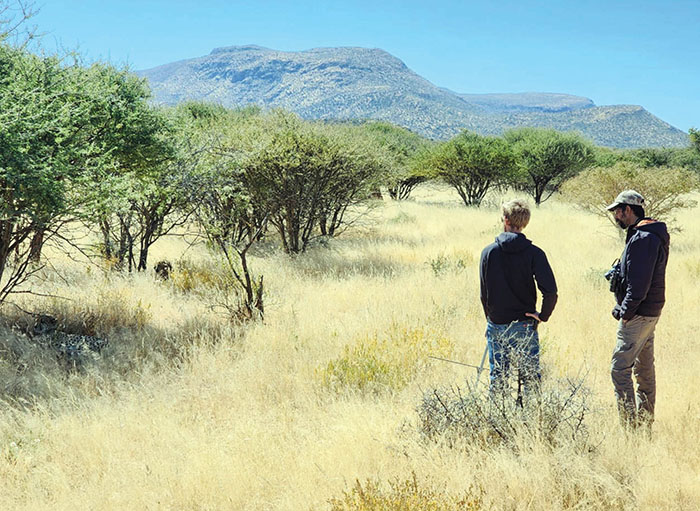
Training in Namibia
Bipin was sent to Namibia and South Africa with the team during June 2022 for a training in handling the Cheetah, habitat management, research, methods of conservation at different levels and how to avoid conflict with villagers living on the forest fringes.
“I gave technical inputs after ground studies along with my team and additionally wore many hats as and when needed including providing assistance required in administrative, financial, legal and policy matters. As the days for the release drew close, though rainy season in India is a difficult period to release Cheetahs in India due to inaccessibility to many forest areas and logistical constraints, it would have been wise to wait for the monsoon to end,” he explained.
September was the ideal month and the occasion was PM Modi’s birthday. The officers of Madhya Pradesh Forest Department, NTCA and MoEF&CC at various levels very efficiently coordinated and performed their roles meticulously in making the project a reality, Bipin added.
Adequate prey base
“The Kuno National Park, situated on the northern side of Vindhyachal mountains, can handle 35 Cheetahs and has an inviolate area of 748 sq.km. where the Cheetahs have a suitable area of up to 6,800 sq.km surrounding them. We had identified four more areas apart from Kuno National Park and the project Cheetah entails bringing 50 big cats from Africa in the next five years and in the long run establishing a viable cheetah metapopulation in the country,” he said.
The Kuno National Park has a good prey base for Cheetahs, comprising the four-horned antelope, chinkara, nilgai, wild pig, spotted deer and sambhar.
Cheetahs will help restore open forest and grassland ecosystems in India and its dwindling wildlife. This will help conserve biodiversity, consolidate and enhance the ecosystem, mitigate climate change and boost the local economy with various livelihood opportunities.
“Extensive hunting of Cheetahs and habitat loss led to their extinction. The ‘African Cheetah Introduction Project in India’ was first mooted in 2009 by Wildlife Trust of India and we have come a long way in finally bringing the fastest animal on earth to India,” Bipin added.
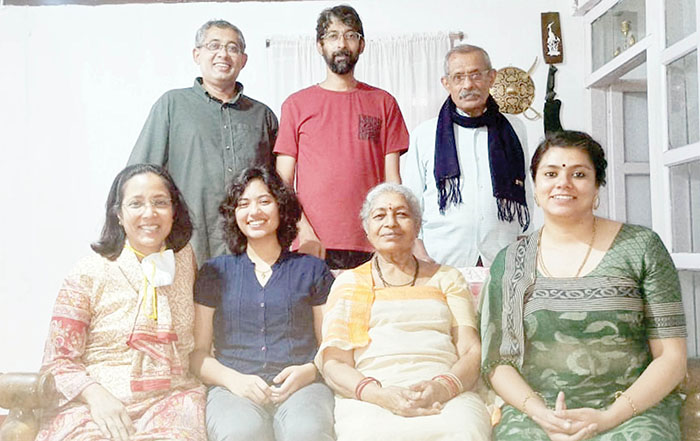
Mother happy
Elated over her son being in the core Project Cheetah team, Bipin’s mother Tara Monnappa told Star of Mysore that the family is proud of Bipin’s achievements. “I don’t have any words to express and he has been passionate about nature since childhood. I am glad he could pursue his passion with full vigour,” she said.
In fact, Bipin’s wife Amritha too is a sociologist and conservationist and works for The Nature Conservancy, a global environmental organisation, working in areas in Assam. Her specialisation is communities living in villages on the fringes of forests and their interactions with wildlife and nature.
Bipin’s elder brother C.M. Bishan is an Orthopaedician in Gonikoppa, Kodagu and an avid wildlife photographer.



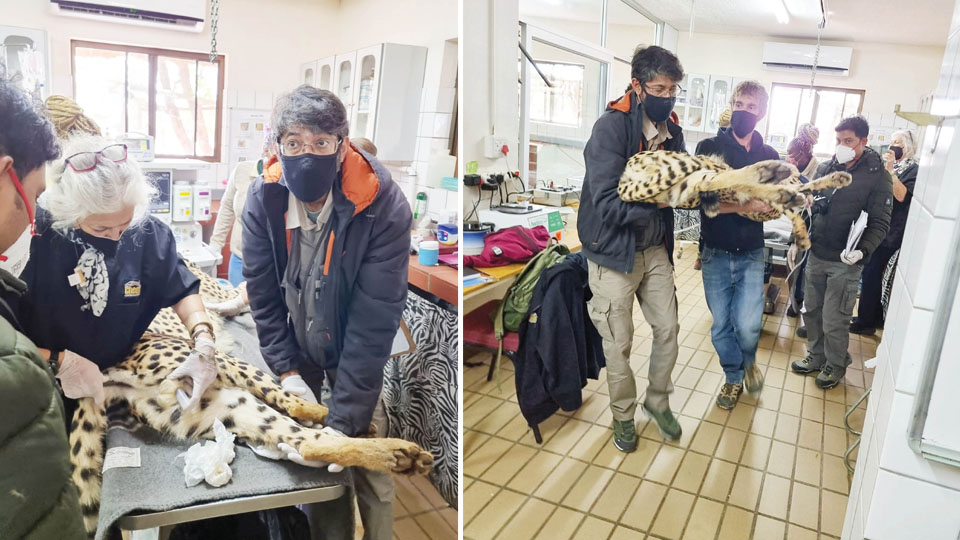



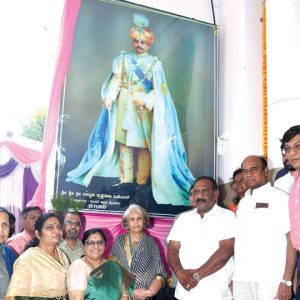
Congratulations and all the best to Bipin and Project Cheetah!
Sounds like, this is more like a birthday present to the Emperor Narendra Modi-who abandoned his wife, and hence represents the best ancient traditions of India! Next could be a series of Temples with Modi idol installed so that the devotees in saffron can join the queue to have Modi’s darshan, in a similar way they do for Goddess Chamundeshwari!
It is not the terrain that counts, but the stopping of encroachments which ensures the Cheetah’s habitat is preserved.. Interesting that this single Cheetah is imported for conservation! Like single bearded Modi or single fat Rahul Gandhi? How ridiculous!!
All the best dear Bipin let goddess kaveriamme and Igguthappa give more strength to do more work!
Cheetah is the fastest animal with speed of 100 Kmph. It has come at right time to India as we are launching 5G shortly. FWA is the killer application of 5G whose speed is 100 Mbps. With the launch of cheetah and 5G let us hope that our economy will take off fast!
What a load of tosh,@Anantharam, the IT techie coolie. Your 5 G does nothing . India has mass poverty. Brazil has 5G, mass poverty there like India. The government could not supply oxygen to hundreds of thousands of people admitted to the hospital through Covid infection in 2021, and all of them died. Nearly a lakh of them according to Western data. Do you think that the 5G would have saved them ?
You need more than this infernal 5G, to pull the country out of the mass poverty, poor hygiene and corruption. What is the purpose of having 5G when the edible oil costs more than 200 rupees, and a bag of rice more than 4000 Rupees. get real, IT techies-it is not like doing coding outsourced by the large companies in the West.
Wait for a few years, when your bretren multiply more, and encroach this Cheetah’s territory. Your Modiji’s stunt fizzles out then.
Hello Anantharam
You represent the new generation of Indians who focused only on IT orogram coding and little else, as the education system in Karntaka is narrowed down to that extent. That is because of the Infosys Murty and his IT sweatshop which did cheap program coding outsourced to them by large US companies. he used the USD-INR differential to do the cheap work. Not the tech India that fool Modi prattles.
Hence, Indians in general lack rounded knowledge. The economy of a country does not depend only on 5G availability-if that is the case, the most 5G prevalent countries in the world are-Finland and Slovenia which have over 90% 5G users. Yet their are not economic powers.
Economy needs service as well as manufacturing industries. China has developed them as its Huawei 5G networking has a wide 5G prevalence there and elsewhere too. China has become economic and military superpower because of its strong manufacturing base, and its excellent applied science capabilities, which US does not have. All 5G will do, is to enable fast porn movies downloads. Indians use their cellor mobile phones primarily for this purpose these days.
Do not day dream!
Congrats To Bipin May Lord Igguthappa bless U.
Modi is basking in glory for having brought African Cheetahs to our grasslands of MP State. However it is to be noted that this operation Cheetah from Namibia to India was conceived much before Modi came to power in 2014. The article itself confirms it was conceived in 2012. Now the spotlight is not so much on the Nabibian Cheetahs nor the conservationists who have toiled to male it happen. It is on Modi who has stolen the spotlight on to himself which is typical of him. Long live Bharath nee Cheetahs.! Congratulations to Bipin and his colleagues.